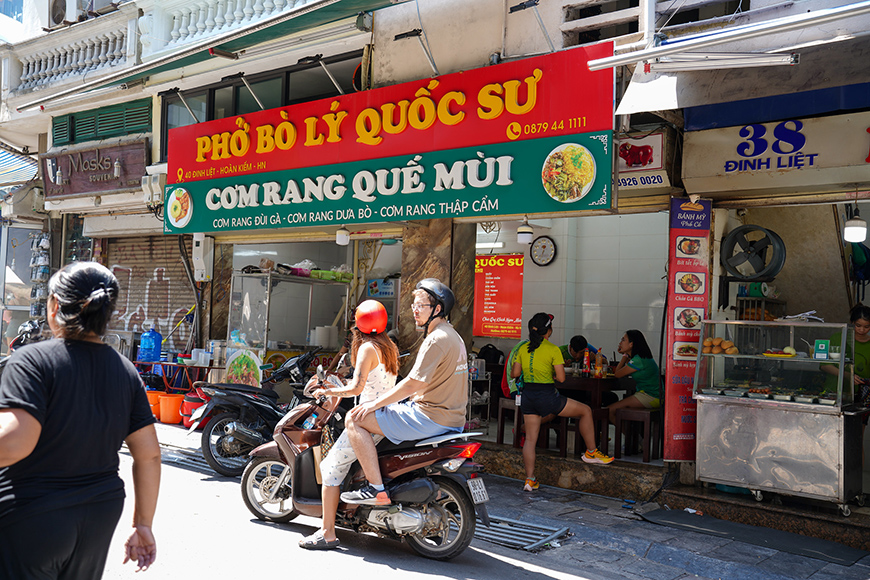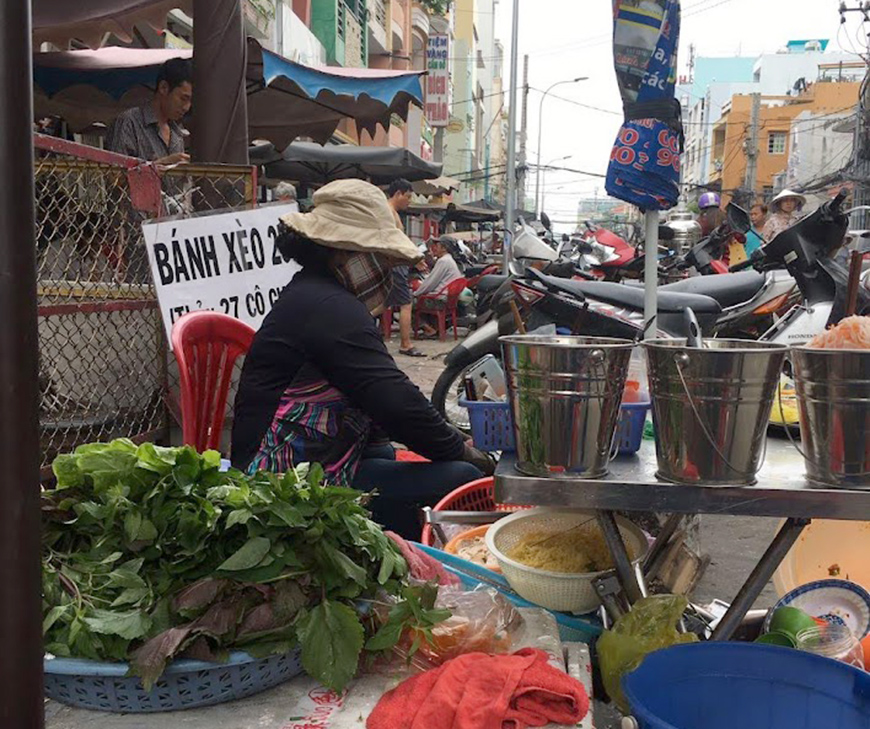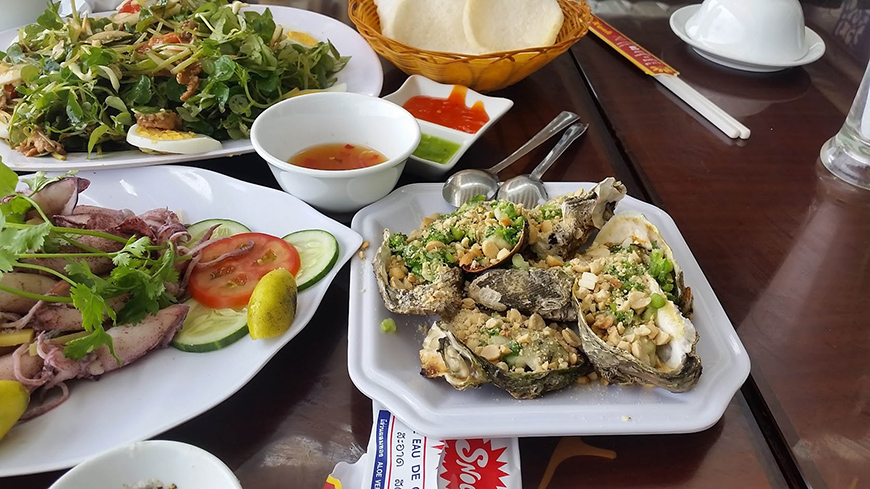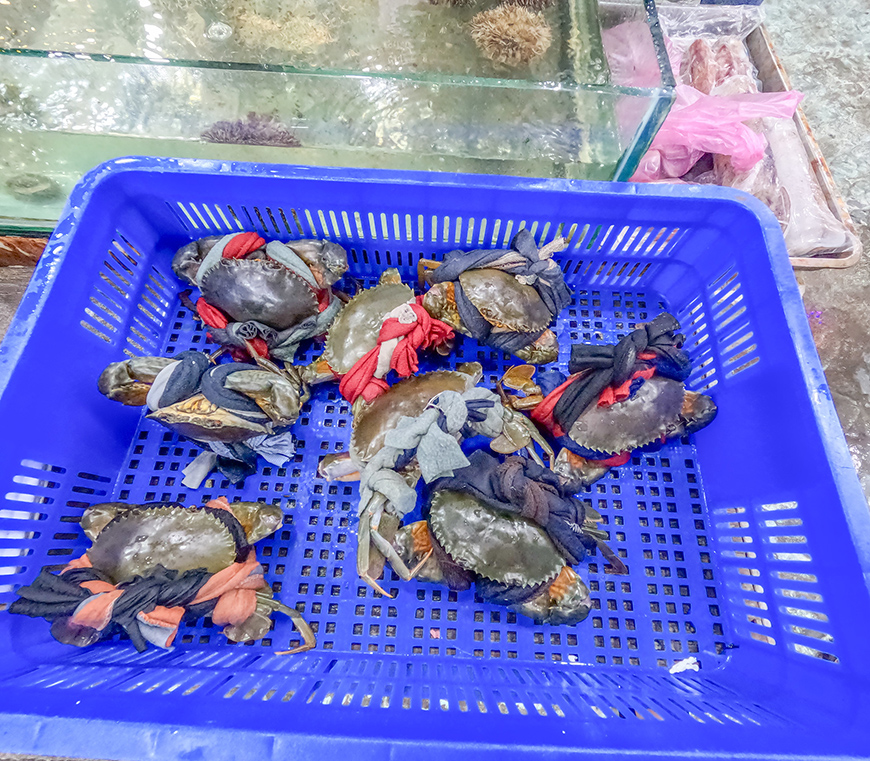 Pho bo, the iconic national dish of Vietnam - Mr Liinh's Adventures
Pho bo, the iconic national dish of Vietnam - Mr Liinh's AdventuresA rich and flavorful history
The history of Vietnamese street food is as rich as its flavors, with origins tracing back centuries to public markets where farmers, fishermen, and artisans sold their fresh goods. This is where the tradition of eating on the street in a friendly, communal atmosphere began. Over time, this tradition was shaped by several influences.
- Chinese influence
Over a thousand years of Chinese rule led to the integration of Chinese techniques, ingredients, and flavors, such as noodles, clear broths, and rice paper rolls, into Vietnamese cuisine.
- French colonization
The French presence in Vietnam introduced the baguette, which became the foundation for the famous bánh mì, an iconic sandwich. Pastries and some European cooking methods also had an impact.
- Local and regional traditions
Each region of Vietnam developed its own specialties based on the local climate, natural resources, and cultures, which enriched the diversity of street food.
- Post-war adaptation
Starting in the 1980s, street food became an economical way to feed the population. It offered a fast and affordable solution for urban workers while also encouraging culinary creativity with available ingredients.
 Woman preparing and selling Banh Xeo - Streets of Sai Gon - Mr Linh's Adventures Team
Woman preparing and selling Banh Xeo - Streets of Sai Gon - Mr Linh's Adventures TeamA culinary journey from north to south
Far from being uniform, Vietnamese street food varies significantly from North to South, with distinct differences in signature dishes and culinary styles that reflect each region's specific climate, culture, and history.
North Vietnam: subtlety, freshness, and balance
Northern cuisine, particularly in Hanoi, is known for a perfect balance of salty, sweet, sour, and spicy flavors. The food is subtle and light, with delicate and harmonious flavors that highlight the freshness of the ingredients. Spices and sugar are used sparingly, resulting in an elegant and refined cuisine.
Signature dish:
Phở, a noodle soup with beef or chicken served in a clear, aromatic broth that is simmered for hours.
Other dishes:
Bánh cuốn (steamed rice rolls stuffed with pork and mushrooms) and
Bún thang (a complex noodle soup with chicken, eggs, and Vietnamese ham, typical of Hanoi).
Our favorite: The phở bò from
Pho Thin on 61 Dinh Tien Hoang street in Hanoi, which embodies the excellence of traditional Vietnamese soup.
Don't miss Bún Chả, a unique Hanoi specialty with grilled pork patties in a subtle sweet and sour broth. It is served with rice vermicelli, fresh herbs, and salad.
 Informal street food stand (selling Nem Lui) in Hoian - Mr Linh's Adventures
Informal street food stand (selling Nem Lui) in Hoian - Mr Linh's AdventuresCentral Vietnam: royal, spicy, and sophisticated flavors
Central Vietnam, especially the imperial city of Hue, is the birthplace of royal cuisine. Dishes are spicier and more sophisticated, with complex flavors influenced by imperial history.
Signature dish: Bún bò Huế, a soup with a rich, powerful broth seasoned with lemongrass, fermented shrimp paste, and chili. It contains beef, pork meatballs, and plenty of greens.
Other dishes: Cao lầu (thick noodles with grilled pork and herbs, a specialty of Hoi An), Bánh bèo (small rice pancakes topped with shrimp, fried onions, and sauce), and Bánh xèo (a crispy pancake with pork, shrimp, and bean sprouts).
Our favorite: The restaurant Cao Lau Khong Gian Xanh (687 Hai Bà Trưng, Phường Minh An) offers an authentic dining experience with generous portions of pork coated in a distinctive brown sauce.
You should also try Bánh Khọt, which are mini fried pancakes cooked in a traditional mold and topped with a shrimp. They are served with salad, fresh herbs, and a sweet and sour fish sauce.
 Da Nang, a true paradise for seafood enthusiasts - Mr Linh's Adventures Team
Da Nang, a true paradise for seafood enthusiasts - Mr Linh's Adventures TeamSouth Vietnam: generosity and sweet flavors
Southern dishes are often richer, with a preference for sweet and salty flavors and a generous use of fresh herbs. There are also many Khmer and Thai influences.
Signature dish: Bánh Mì, the iconic Vietnamese sandwich. This masterpiece of flavors and textures is a legacy of French colonization. A crispy baguette is filled with pâté, meat, pickled vegetables, cilantro, and chili.
Other dishes: Cơm tấm (broken rice with grilled pork, steamed egg, pickled vegetables, and nuoc mam sauce),
Gỏi cuốn (fresh spring rolls with shrimp, pork, vermicelli, and herbs),
Hủ tiếu (a clear noodle soup with shrimp, pork, and quail eggs), and
Lẩu mắm (a hot pot with a strong fermented broth, fish, and exotic vegetables).
Our favorite: For a colorful culinary exploration, check out
Food Alley at 76 Hai Ba Trung in Ho Chi Minh City. Our top recommendation, however, takes you further afield to the Mekong Delta, where you can try
bánh cong in Can Tho, and to
Vung Tau's seafood market on Back Beach. There, you can choose your fish or crustacean, and it will be prepared for you right away.
Don't miss Bún Thịt Nướng, a "symphony of flavors" with rice vermicelli, lemongrass-grilled pork, and crispy spring rolls, all topped with a sweet and sour fish sauce, crushed peanuts, and mint leaves.
 Local seafood market or how to invite one’s meal - Mr Linh's Adventures
Local seafood market or how to invite one’s meal - Mr Linh's AdventuresVietnamese Street Food: a guide for food lovers
The ideal way to enjoy street food is to sit on a small plastic stool among the locals, at the busiest vendor. The food is typically fresh, prepared right in front of you, and always delicious. Vietnamese street food is a daily celebration of history, culture, regional diversity, and affordable deliciousness for everyone.
Forget the fancy restaurants and dare to sit on the side of the street, as that is where the authenticity and magic lie.
Has this article whetted your appetite?
Contact us to plan your own culinary itinerary and explore the hidden treasures of Vietnamese street food!